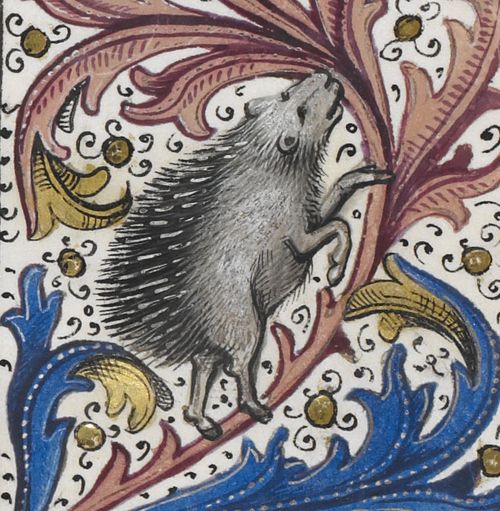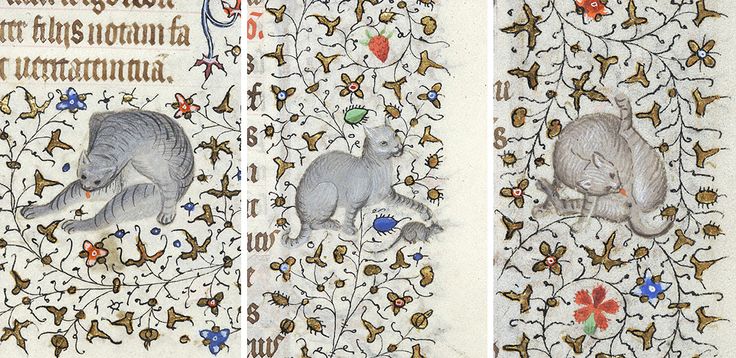Quirky History: Urchins, Igls, and Hogs: Hedgehogs in Medieval Manuscripts
Recueil des croniques d'Engleterre, vol. 1, Netherlands (Bruges), 1471-1483, Royal MS 15 E. iv, f. 180r
We love hedgehogs! Hedgehogs are a commonly occurring animal in manuscripts and bestiaries throughout the Middle Ages (and who can blame the artists for including them?). If you’ve read our other posts about medieval manuscripts, be warned: this might be the cutest one yet.
Per the Bestiary entries, hedgehogs feed their young grapes by climbing up the grapevine, dropping the grapes on the ground, and then rolling over the grapes so that they are impaled on the hedgehog's spikes. The hedgehog then carries the grapes on its spikes back to the den where the young eats the fruit.

Rochester Bestiary (England, c. 1230) London
This image comes from the beautifully illustrated Rochester Bestiary, which was made in England sometime around 1230 and is now kept at the British Library. In fact, this very image has inspired a collaboration between Discarding Images and Obrazki nunu which resulted in an animated short film. Watch it here. Your heart will melt. We promise.
The English’s love affair with the hedgehog goes back a long way. So far back, in fact, that the word “hedgehog” has changed several times throughout the centuries.

The oldest word for hedgehog that we can trace in historical sources is the Anglo-Saxon word “igl,” which is a Germanic word. This word for “hedgehog” still lives on in other Germanic languages, e.g. Swedish where a hedgehog is called “igelkott.” But throughout most of the Middle Ages, hedgehogs in English were called “urchins.” The word “hedgehog,” which literally means an animal that looks like a pig and lives in your hedge, doesn’t come into use until the fifteenth century.

The Dering Roll, England c. 1270-1280
An early indication of the new word to come is the heraldic shield of the English knight Henry de Herice, who lived in Kent in the 1270–1280s. "Herice" is very similar to the Old French word "heriçon," which means "hedgehog." And because people in the Middle Ages loved puns, his heraldic shield of course sported no less than three hedgehogs.
We’re all in agreement, right? Hedgehogs are way better than those jerk cats in medieval margins. They win the cute award, hands down.




